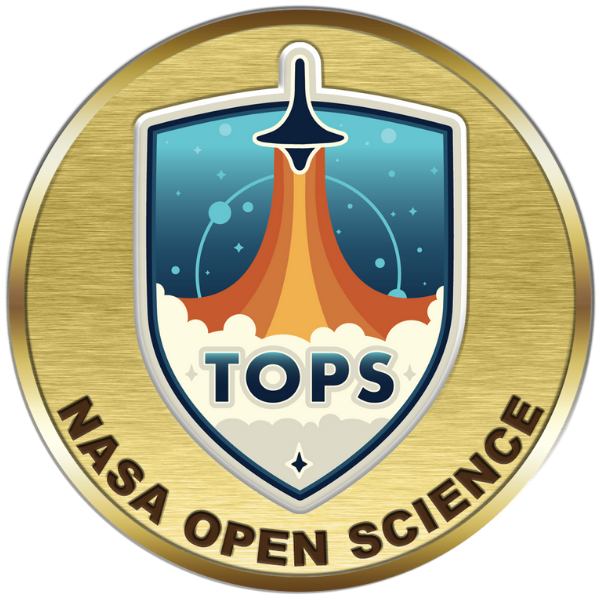
 |
| May 2024 Volume 13 Issue 2 |

Enceladus is a small (~500 km diameter), dynamic, and potentially habitable moon of Saturn (Vance et al., 2023). Enceladus’s plumes, which vent water crystals sourced from a global subsurface ocean, erupt from four prominent, evenly spaced surface fractures – informally called Tiger Stripes – within the satellite’s South Polar Terrain (SPT) (above). The SPT exhibits anomalously high heat flux and regional crustal thinning (Park et al., 2024); suggesting that interrelated thermo-mechanical phenomena underlie SPT activity (Spencer et al., 2006). Moreover, observed jet activity varies over Enceladus’s tidal cycle with two peaks in activity: one after the satellite reaches apoapsis (i.e., the furthest point in orbit relative to Saturn) and a smaller peak after periapse (i.e., the closest point) (Hedman et al., 2013). These observations suggest that diurnal tides periodically deform Tiger Stripes to enable plume activity. However, the exact mechanism that regulates jet activity along the Tiger Stripes (e.g., tidally induced strike-slip or opening motion) is not well understood.
To explore a potential relationship between the dynamics of the Tiger Stripes and jet activity at Enceladus, we develop three-dimensional finite element models ... [full article]
Dear Community,
I am TOPS certified! NASA's Transform to Open Science (TOPS) initiative is designed to transform agencies, organizations, and communities to an inclusive culture of open science. Their open science curriculum and certification was a fun way to test my knowledge and pick up a few pointers. Amusingly enough of the modules I completed, I scored the lowest (relatively speaking!) on the Open Code badge. You can test your knowledge and collect all badges in about a half-hour or go at a more leisurely pace.

The month of May kicks off our summer workshop season. I hope to see many of you soon and discuss your science. Have a great summer of research.
Lorraine Hwang, Co-Director
Join us in congratulating our 2024-2025 CIG Distinguished Speakers:
Apply to Host a Speaker
The CIG Speaker Series seeks to promote computational modeling in geodynamics and related Earth science disciplines. The series aims to bring computational geodynamics speakers to institutions that may not otherwise have access to speakers with expertise in computational science or computational geophysics. By doing so, we aim to connect speakers and CIG with audiences from a variety of STEM domains, and to broaden participation in CIG and to work toward building a more diverse community within computational geodynamics. Institutions interested in hosting a Speaker in 2024-2025 should apply by May 31, 2024. See the website for more information.CIG held an online hackathon on March 29 to update its software development best practices. The participants carefully reviewed the current version of the best practices to identify gaps, outdated wording, and areas that needed general improvement. The resulting updates further align CIG best practices with those of the Journal of Open Source Software, improve recognition for contributors, add guidelines for release notes, and include better wording and organization across the minimum, standard, and target best practices. Future updates could include more detailed explanation and motivation as well as migrate the documents to a format with easier navigation and readability. Contact us if you are interested in contributing to a new working group to help CIG to continue improving our software and best practices. Contributed by Brad Aagaard, USGS.
The 2024 Ada Lovelace Workshop on Modelling of Mantle and Lithosphere Dynamics will take place from Sunday, 1st September 2024 afternoon to Friday, 6th September 2024 morning. Limited travel support is available for U.S. based early career participants. For more information, please see the EGU meeting website and our website for support.
CIG Monthly Webinars have a new time Thursdays @noon / 12P PT. The 2024 webinar series will focus on current efforts to understand the relationship between different systems in geosciences. By presenting examples of coupled geodynamics models and the difficulties encountered in coupling them, speakers of this series invite us into exploration and discussions of the science opportunities and challenges in code coupling and multidisciplinary research. See the webinar page and the calendar for more information.
| May 9 | Interactions Between Tectonic and Surface Processes: Insights from 2-D and 3-D Geodynamic Modeling. Thomas Theunissen, University of Bergen |
| May 16 | From Mantle Convection to Seismic Observations -- Simulating 3-D Wave Propagation in Geodynamic Earth Models Bernhard Schuberth, Ludwig-Maximilians-Universität München |
| May 28-June 7 | ASPECT Hackathon | Bellvue, Colorado | |||
| June 10-14 | Crustal Deformation Modeling Workshop | Golden, Colorado | |||
| June 16-22 | Rayleigh Hackathon | Granby, Colorado |